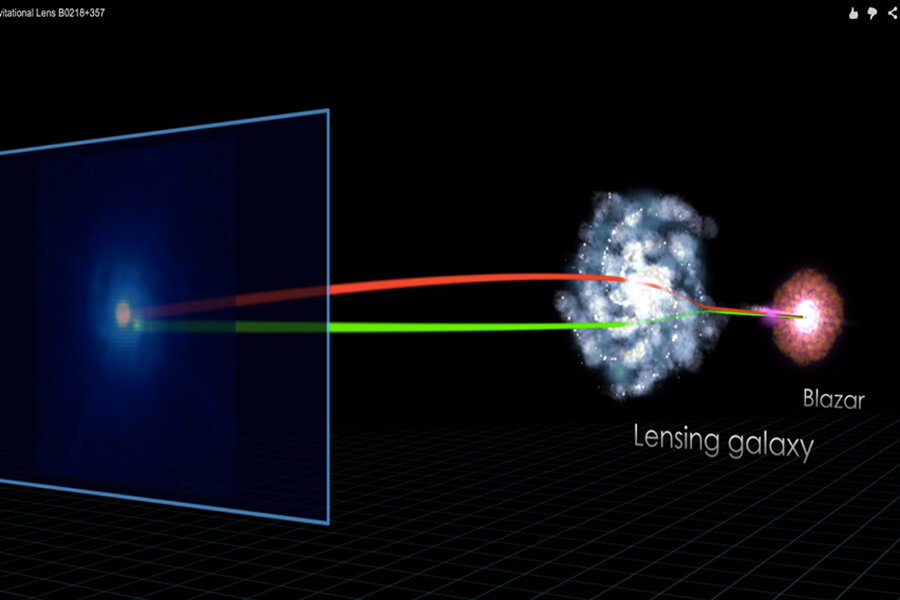NASA telescope witnesses intense space radiation bending around galaxy
A sudden burst of bright light emanating from a source more than 4 billion light-years away has prompted scientists to make the very first gamma-ray measurement of a phenomenon known as gravitational lensing.
Often used as a proof to further Einstein's general theory of relativity, which explains gravitation by describing how massive objects cause space and time to "curve," gravitational lensing results when a massive galaxy comes in between the source of light and the observer.
As a result of this "deflector," light is distorted in a manner that the observer sees multiple images of the star that is the source of the light.
In September 2012, Fermi's Large Area Telescope (LAT) detected a series of bright gamma-ray flares from blazar B0218+357, located 4.35 billion light-years from Earth. A blazar is a type of active galaxy noted for its strong, intense emissions of electromagnetic radiation. The deflector in this case was an intervening spiral galaxy like our Milky Way, said Teddy Cheung, lead scientist of the study group and an astrophysicist at the Naval Research Laboratory in Washington.
Dr. Cheung and his group of scientists observed "three episodes of flares showing playback delays of 11.46 days," which was a result of gravitational lensing.
The Fermi team took notice of this "delayed playback" effect.
"One light path is slightly longer than the other, so when we detect flares in one image we can try to catch them days later when they replay in the other image," said team member Jeff Scargle, an astrophysicist at NASA's Ames Research Center in Moffett Field, Calif., in a press release.
Astronomers think that the gamma ray emissions take slightly different paths, resulting in different time delays as they travel through space.
"Over the course of a day, one of these flares can brighten the blazar by 10 times in gamma rays but only 10 percent in visible light and radio, which tells us that the region emitting gamma rays is very small compared to those emitting at lower energies," said Stefan Larsson, an astrophysicist at Stockholm University in Sweden, who was also part of the team.
In addition to developing a better understanding of emission regions near black holes, scientists say that this study will also help to measure other gravitational lens systems.
"It might also help us understand entirely new gravitational lens systems," Cheung said.
It was only in 1979 that the very first observation of gravitational lensing was made through "The Twin Quasar" where an intervening object bends light between the Earth and the quasar, a highly energetic galactic nucleus.
A paper describing the research will appear in a future edition of The Astrophysical Journal Letters.






